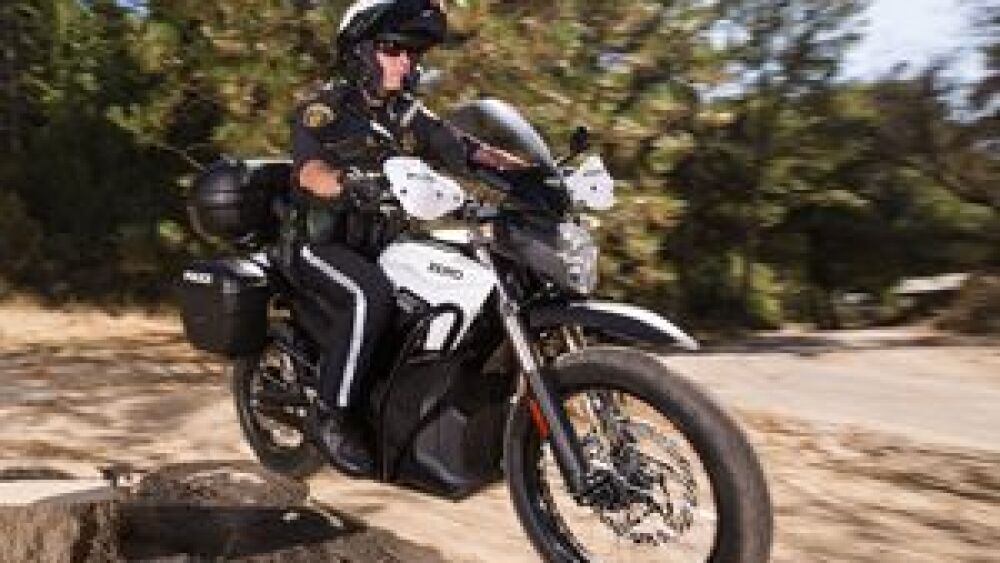For many motorcycle enthusiasts, the blub-blub-blub of the engine that annoys other motorists and neighbors is all part of the attraction and charm. For others, the complete absence of that noise, as well as exhaust fumes and the need to gas up, is a strong selling point.
Those latter characteristics belong to battery-powered motorcycles from Zero Motorcycles, one of which was recently purchased by the Saltville (Va.) Police Department. Saltville has 2,000 citizens but police patrol more than 8 square miles. Included in the police department’s patrol responsibilities is the Salt Trail, which follows the bed of a railroad line that once carried the output of a salt mine that gave the town its name.
“A four-wheel drive vehicle wasn’t workable, and a conventional motorcycle made noise that disturbed hikers and wildlife,” said Robb Hall, Saltville PD’s police chief. “The Zero is nearly silent and very green. Our citizens like it, and it doesn’t broadcast to everyone that the police are on their way.”
Chief Hall recently showed off the new bike at the town’s elementary school.
“I rode it down the hallway and into the cafeteria with the blue lights on. The kids loved it,” he said. “We would much rather be talking to them now, around the electric motorcycle, than from the back seat of a patrol car in 5 to 10 years.”
The motorcycle was paid for with funds from the settlement of a large civil case with a pharmaceutical manufacturer. The local prosecutor who oversees the fund is committed to using it for public-safety acquisitions. Total cost, including saddlebags, hand guards, and all emergency equipment, was about $21,000, Hall said.
This is more than a typical police motorcycle would cost, but Saltville PD will never need to buy gas or oil for it, and maintenance costs are expected to be a fraction of those for a gas-powered vehicle. Hall said the bike has more than enough torque and speed than they need, so there’s no restriction on use of the electric bike that wouldn’t apply to a gas model.
Saltville’s model is the Dual Sport (DS). It puts out 68 foot-poundspound-feet of torque, has a top speed of 98 MPH and will go about 126 city miles between charges. The range is reduced with higher speeds, but is rated for 61 miles at 70 MPH.
The bike gets a full recharge from a standard 120V outlet, which the company said takes a bit less than 8 hours or 4.6 hours with an optional quick charger. The cost of electricity to do a full charge is about $1.28, although that’s obviously variable depending on the local cost of electrical power.
It also has a clutch less direct drive, so there’s no shifting required.
Chief Hall likes that his officers don’t need helmet-mounted communications gear to hear their portable radio, as they would with a conventional motorcycle.
“We just turn up the radio and use it with the speaker or an ear bud,” he said. “If my cell phone rings, I just stop and answer.”
When I spoke to Chief Hall, he was looking forward to taking the bike on a short road trip.
“I’m taking it down to an Earth Day celebration in Abingdon,” he said.
It’s not often that police agencies have a lot to show off to environmentalists like those who observe Earth Day. Riding the Zero, Saltville PD is the exception.



